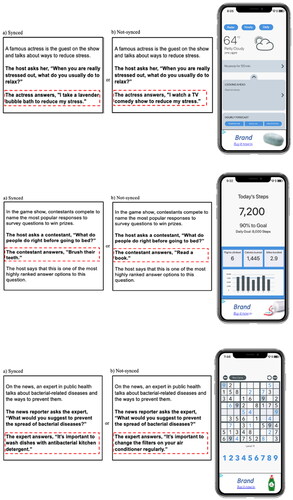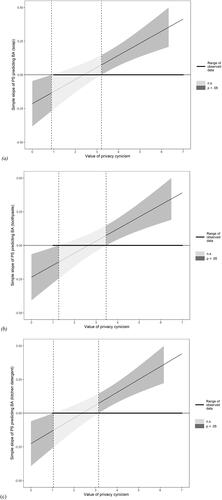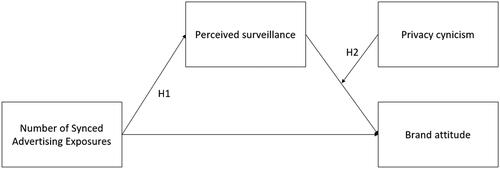Figures & data
Figure 2. Scenario and smartphone images as displayed to the participants. Note. Participants were exposed to either (a) the synced or (b) the nonsynced scenario per brand. The brand logos used in this study were replaced in this figure with the text “brand.” The red dotted line was not presented to the participants and edited to clarify the differences between the scenarios.

Figure 4. The moderation of privacy cynicism on the relationship between perceived surveillance (PS) and brand attitude (BA) for the (a) soap, (b) toothpaste, and (c) kitchen detergent brand. Note. For any values of privacy cynicism for which the confidence band does not contain zero, the effect of perceived surveillance on brand attitude is significant.

Table 1. Results overview.


